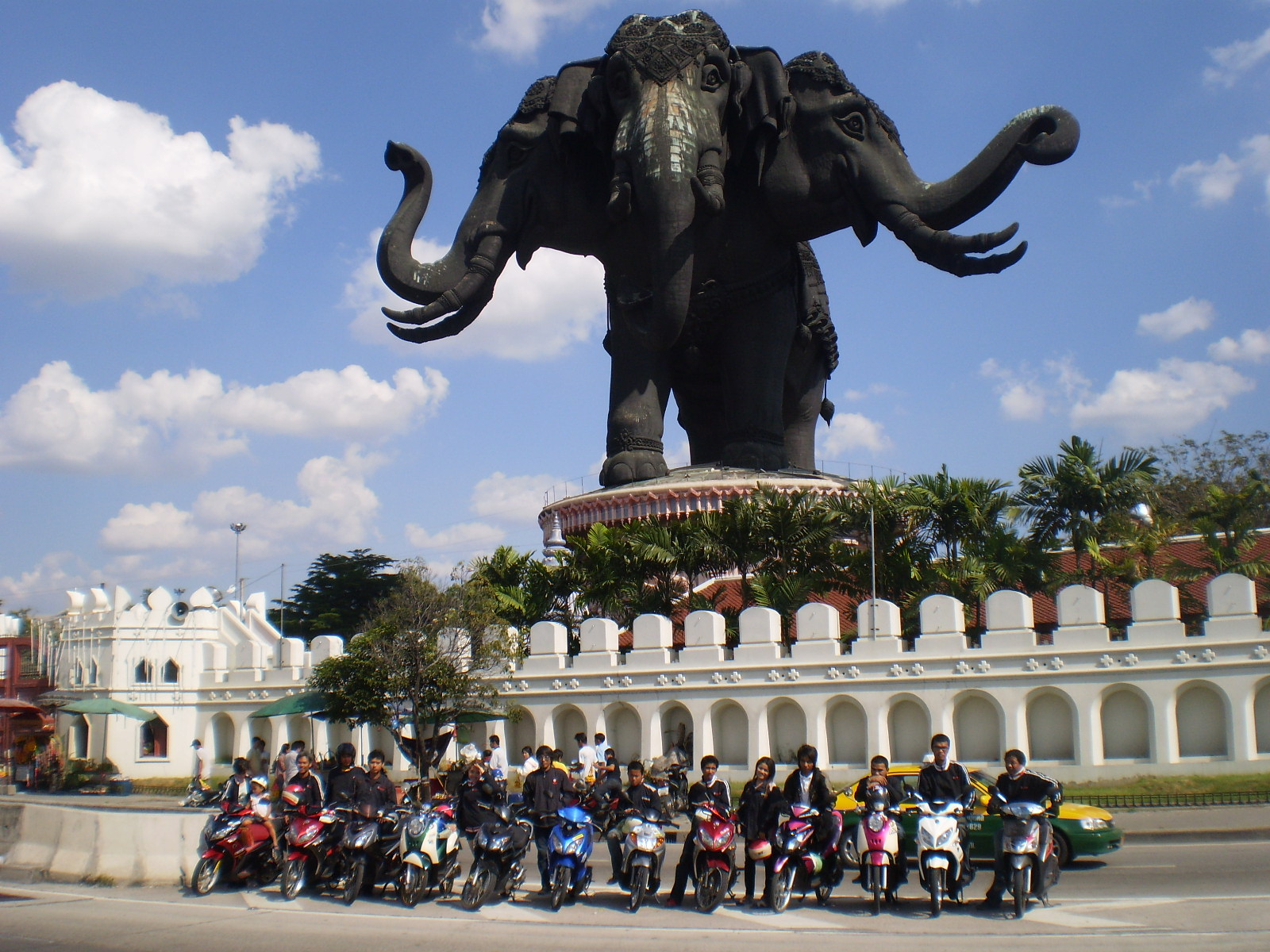Have you ever been wandering around the sois of Pattaya and seen hunks of bright red meat hanging inside the glass display cases of some of the street food vendors? Well, that’s one of the two namesakes that combine to make up the Thai dish known as Kao Moo Dang. The other namesake is kao, or white steamed rice. And oh yeah, the red meat is moo dang, or red pork.
One of the things I like most about Kao Moo Dang is that it is not a stir-fry. Don’t get me wrong. I really like Thai stir-fries, but sometimes, especially when it’s really hot outside, something that is cooked, but not really cooked is just the ticket. “Wait a minute”, you say, “That doesn’t make any sense.” I know it doesn’t, but don’t forget this is Thailand.
First, let me explain. Red Pork and Rice is a dish made up of previously cooked items. No, they’re not leftovers, the ingredients have all been prepared in advance, and are assembled when it is ordered. It’s kind of like a salad without produce. Think of a European al fresco style meal, or an American style picnic lunch that’s served on a bed of rice.
Briefly, Kao Moo Dang is comprised of white steamed rice, a few chunks of Thai ‘roasted’ pork, which is similar to a Western style ‘crispy pork crackling’, some thinly sliced Thai sausage, and the star of the dish, red pork (usually a lean cut of pork loin or pork steak). A marinade made from a blend of tomatoes, minus their skins and seeds, preserved plums, honey, fish sauce, pork stock, and a drop or two of red food coloring is what gives the pork its vivid red color, and a unique zesty flavor.
The rice and three pork meats are topped with a couple spoonfuls of a Thai style barbeque sauce composed of dark, sweet soy sauce, honey, vinegar, and corn starch. The sauce reminds me a little of a sweetened mixture of Western tomato and barbeque sauces. The dish is traditionally served with fresh cucumber slices, a few green onions, and half of a hardboiled egg. With the exception of the rice, all of the components are served at room temperature or cold. This makes the dish very refreshing, and a little less heavy than the usual Thai stir-fries. For those of you who can’t handle anything spicy, Red Pork and Rice, with its sweet and tangy flavor shouldn’t be a problem.
Sometimes you have to look a little harder to find a street stall that serves Kao Moo Dang. You’ll see plenty of the red pork hanging in street side restaurants, but many of these will be noodle shops that feature red pork in their noodle dishes. Variations in both the taste and ingredients are common among the vendors that offer this delicious, non-stir-fry favorite.
The street price for Red Pork and Rice is generally between 30 and 40 baht, and I’ve yet to see it offered in any fancy sit down restaurants.
How to make Kao Moo Dang







